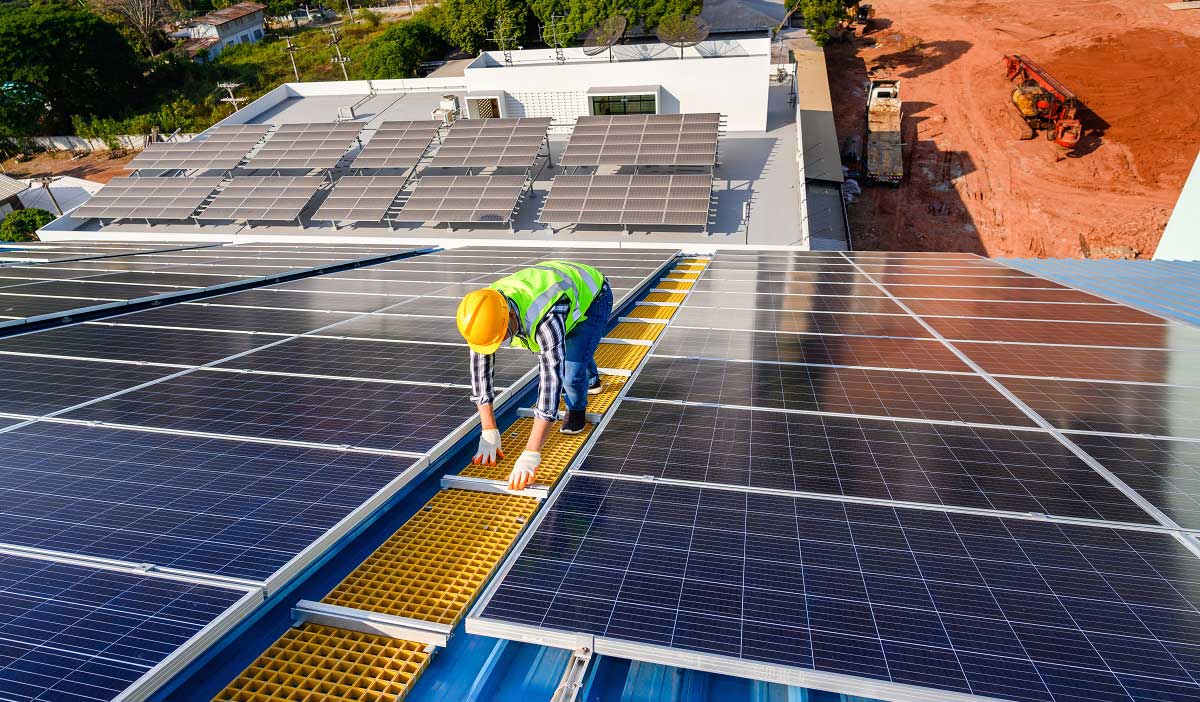In recent years, there has been a growing interest in solar energy as a renewable and sustainable source of power. Solar power systems not only help reduce our carbon footprint but also provide homeowners and businesses with substantial savings on energy bills. One of the most attractive incentives for investing in solar energy is the solar tax credit offered by the Internal Revenue Service (IRS) in the United States. However, it is important to understand how the IRS verifies solar credit to ensure compliance with tax laws and regulations.
In this article, we will explore the process of how the IRS verifies solar credit, shedding light on the important factors and documentation required for claiming this tax benefit.
Understanding The Solar Tax Credit
The solar tax credit, also known as the investment tax credit (ITC), is a federal tax incentive designed to promote the adoption of solar energy systems. It allows eligible taxpayers to claim a percentage of the qualified expenses incurred for installing solar panels on their residential or commercial properties. The credit is calculated based on a percentage of the total installation costs, including equipment, labor, and other associated expenses.
Documentation Required For Claiming Solar Credit
To claim the solar tax credit, taxpayers must provide the necessary documentation to the IRS as evidence of their qualified expenses. The following documents are typically required:
Proof Of Purchase
Taxpayers need to provide proof of purchase for the solar energy system, including invoices, receipts, or sales contracts. These documents should clearly indicate the date of purchase, the vendor's information, and a detailed breakdown of the expenses incurred.
Manufacturer Certification
In addition to proof of purchase, taxpayers must ensure that the solar panels and related equipment used in their installation are certified by the manufacturer as eligible for the tax credit. Manufacturers usually provide certification statements or product eligibility lists that can be submitted to the IRS as supporting documentation.
Completion Of IRS Form 5695
To claim the solar tax credit, taxpayers must complete IRS Form 5695, which is specifically designed for residential energy credits. This form requires detailed information about the installation costs, including the total amount spent and the percentage eligible for the credit. It is essential to accurately fill out this form to avoid any delays or complications during the verification process.
Verification Process By The IRS
Once the taxpayer submits their claim for the solar tax credit, the IRS initiates the verification process to ensure compliance with the applicable tax laws. The IRS may conduct a thorough review of the submitted documentation and may even request additional information if needed. Here are some key steps involved in the verification process:
Documentation Review
The IRS carefully examines the submitted documentation, including proof of purchase, manufacturer certification, and Form 5695. They cross-verify the details provided by the taxpayer against their records to confirm the accuracy and eligibility of the claimed expenses.
Site Inspection
In some cases, the IRS may conduct a site inspection to verify the installation of the solar energy system. This inspection helps ensure that the claimed expenses align with the actual installation and that the system meets the necessary requirements to qualify for the tax credit.
Communication With Taxpayers
During the verification process, the IRS may contact the taxpayer to request additional information or clarification regarding the claimed expenses. It is crucial for taxpayers to promptly respond to any inquiries from the IRS to avoid delays or potential disqualification from receiving the solar tax credit.
Ensuring Compliance And Avoiding Penalties
While claiming the solar tax credit can result in significant financial benefits, it is essential to ensure compliance with IRS guidelines to avoid penalties or legal consequences. Here are a few tips to help taxpayers stay compliant:
Maintain Accurate Records
Taxpayers should maintain accurate records of all documents related to their solar energy system, including purchase invoices, contracts, warranties, and manufacturer certifications. These records serve as crucial evidence during the verification process and should be retained for future reference.
Seek Professional Assistance
Navigating the complexities of the tax code can be challenging, especially when it comes to claiming renewable energy tax credits. Seeking professional assistance from tax advisors or certified public accountants (CPAs) with expertise in solar tax credits can help ensure accurate reporting and compliance with IRS regulations.
Stay Informed
Tax laws and regulations are subject to change, so it is important for taxpayers to stay informed about any updates or revisions to the solar tax credit. The IRS provides resources on their official website, and individuals can also consult with tax professionals to stay up-to-date with the latest developments.
Understanding How Does IRS Verify Solar Credit
The solar tax credit is an attractive incentive that encourages the adoption of solar energy systems. However, it is crucial to understand how the IRS verifies solar credit to ensure compliance with tax laws and regulations. By providing the necessary documentation, accurately completing IRS Form 5695, and cooperating with the IRS during the verification process, taxpayers can confidently claim the solar tax credit and enjoy the benefits of renewable energy while contributing to a sustainable future.
Ready to start claiming your solar tax credit? Visit Gov Relations and explore our comprehensive resources and guides to learn more.







